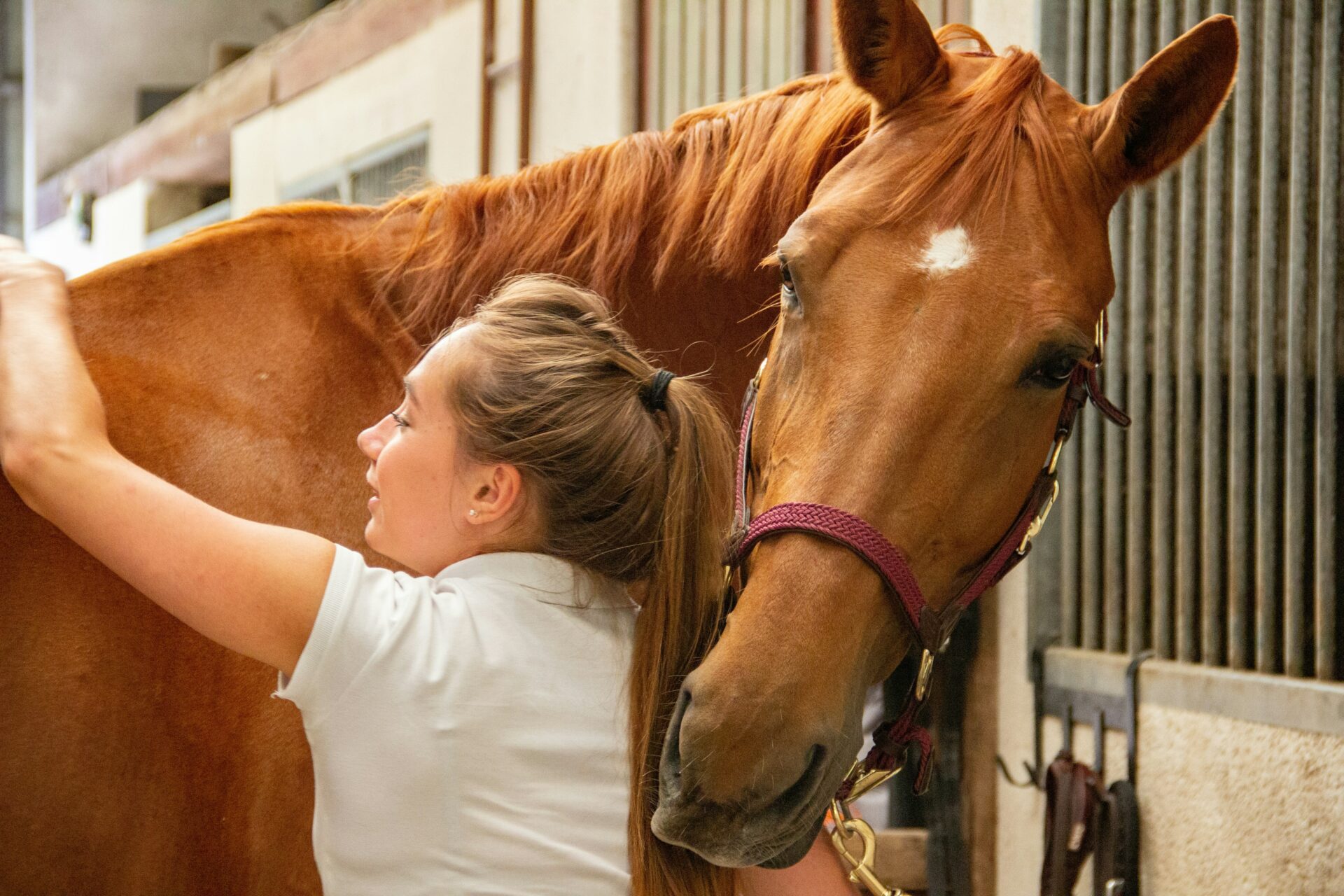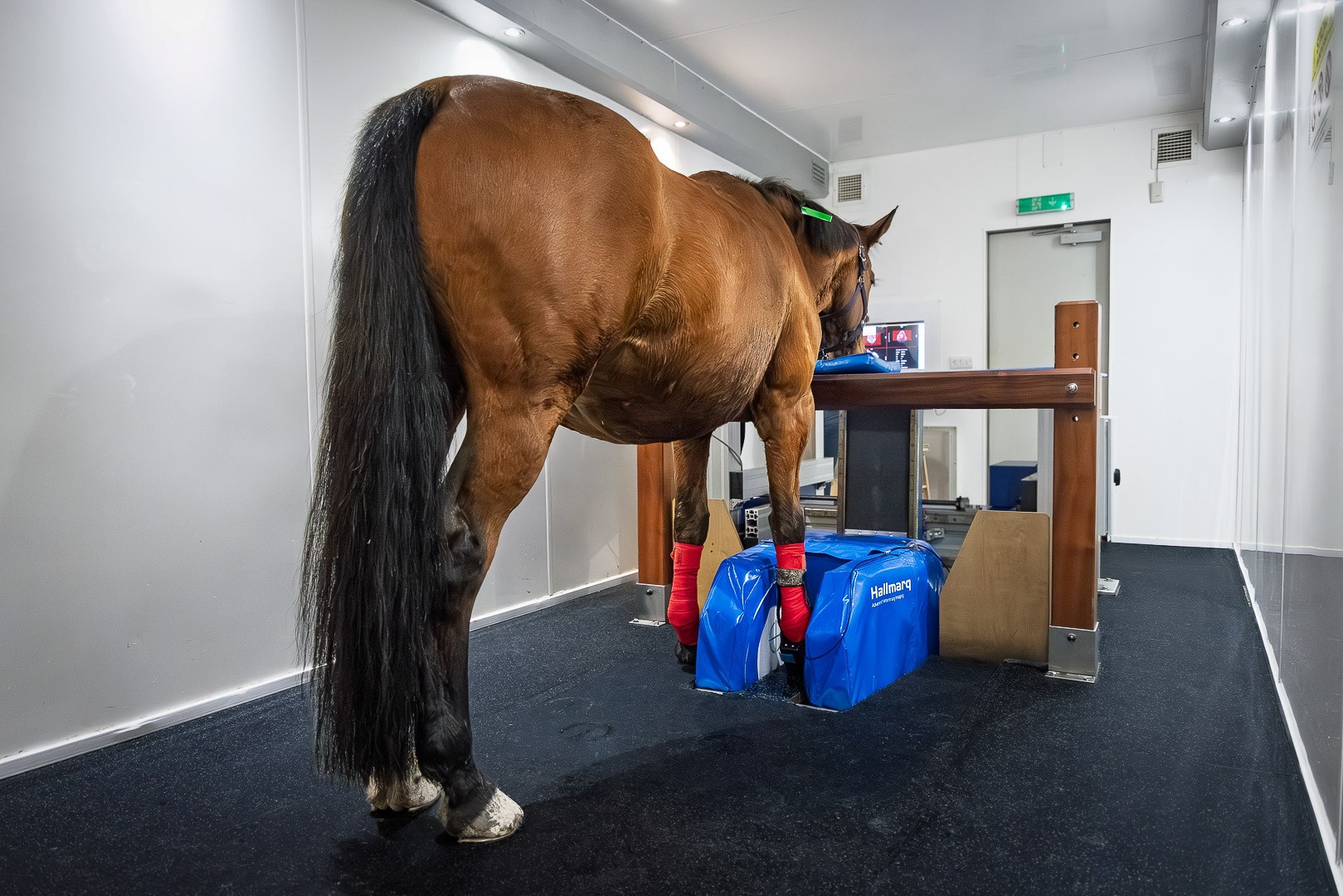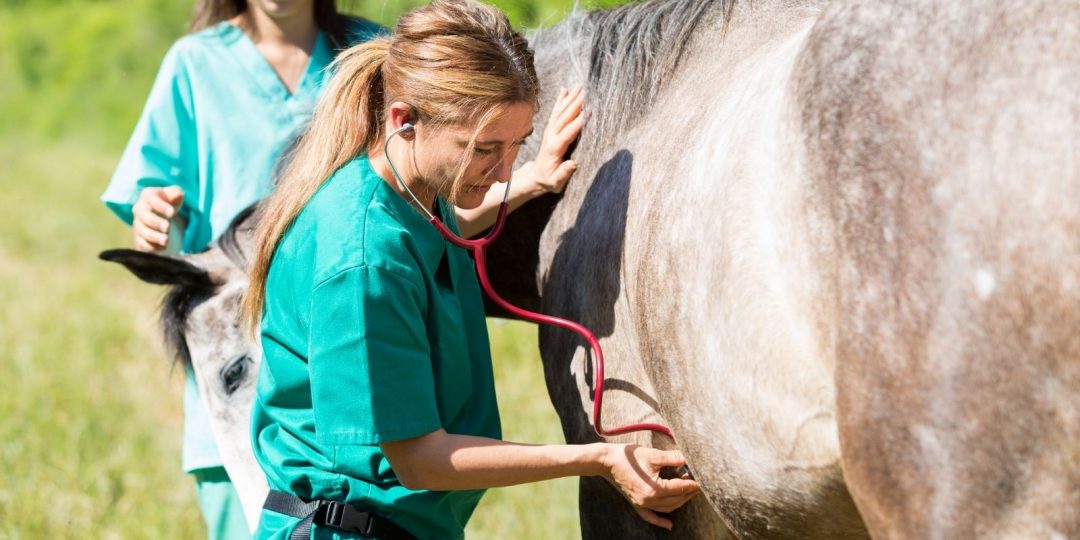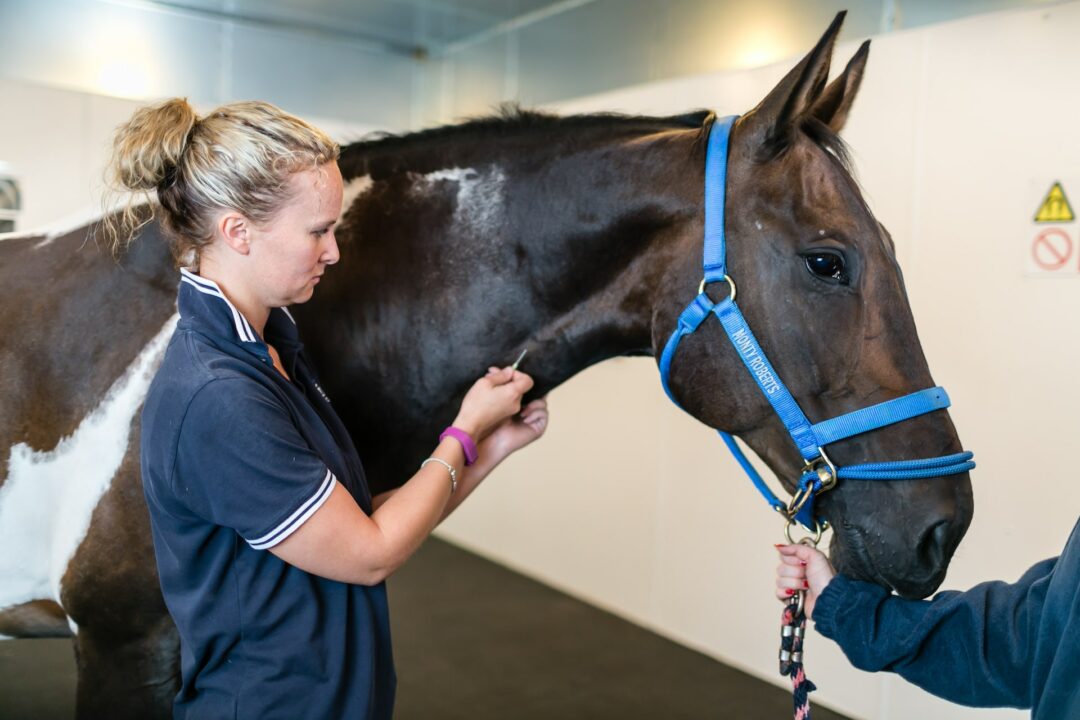As an equine veterinary technician, you’ll play an essential role in the health and well-being of horses, assisting veterinarians in diagnosing, treating, and rehabilitating equine patients. Guest author Amanda K Nielsen, Veterinary Technician Director at South Valley Equine, in Saratoga Springs, Utah, knows exactly what being a vet tech entails. In this blog, she gives the lowdown on what a veterinary technician may do in a typical working day and how becoming an equine vet tech might be the perfect career path for you.
What does an Equine Veterinary Technician do?
An equine veterinary technician wears many hats. From assisting with surgeries to running diagnostic tests, their day-to-day responsibilities are varied and require both technical skills and compassion. As the right hand to the veterinarian, a vet tech ensures the smooth operation of a veterinary clinic or hospital, helping provide high-quality care to every patient. Some of the key responsibilities include:
- Surgical assistance: prepare instruments, administer anaesthesia, and monitor horses during surgeries
- Patient care: feed, medicate, and administer injections while monitoring the recovery of patients
- Diagnostic imaging: conduct imaging procedures such as ultrasounds, X-rays, MRIs, and help veterinarians with diagnose
- Client interaction: educate horse owners on proper care, treatment options, and preventive healthcare
- On-call duties: be ready to respond to emergencies, both day and night.
- Patient records management: maintain accurate records to track the health history and treatment of equine patients
It might come as no surprise, but our veterinary technicians are the backbone of our clinic. Their commitment to compassionate, high-quality care is critical to the day-to-day function of our practice and we’d accomplish very little without them. They guide, teach, and share their passion at any opportunity they have—a role vital in not only maintaining the welfare of every animal that steps foot through our doors but every human too.”
A day in the life of an Equine Veterinary Technician
Curious what a typical day might look like for an equine vet tech? Let’s take a look at the schedule of a veterinary technician working in a clinic focused on equine sports medicine and surgery.
Morning prep and patient assessment
You’ll have an early start, often before the sun rises! The first task is to prepare for the day’s surgeries and appointments. Careful attention to detail in these early steps is critical to ensuring smooth procedures. For each patient, this can include performing pre-operative physical exams, checking weight, assessing overall health, determining the anaesthesia needs of each patient, and drawing blood for pre-op tests.
Surgery and anaesthesia duties
As an equine vet tech, you might spend much of your day in the surgery room. Whether it’s administering anaesthesia or standing by during MRI procedures, your job is to ensure that the horses are comfortable, stable, and receiving the best care possible. You’ll be monitoring vital signs, assisting in the procedure, and ensuring everything goes according to plan. After surgery, your role continues with monitoring recovery to ensure the horse emerges safely from anaesthesia.
Post-operative care and records
Once surgery is complete, your job isn’t over. You’ll clean and sterilize surgical tools, restock necessary items, and input medical notes into patient records. Keeping accurate and up-to-date records is essential, as it ensures veterinarians and other staff have the right information for follow-up appointments.
Afternoon appointments and emergencies
Equine veterinary technicians are often called upon to assist with regular appointments in the afternoon and evenings.
This could range from lameness exams to routine health checks and vaccinations. On top of this, emergencies are an inevitable part of the job. Whether it’s a horse with colic or an injury that needs immediate attention, you have to be ready to spring into action at any time.
Your day may not end when the clinic closes!
Many vet techs take on-call shifts, ensuring that emergency care is available 24/7. The job requires dedication, but the reward is knowing that you’re playing a vital role in the recovery and health of the horses under your care.

How technology is shaping the field
Technology has transformed the way equine veterinary technicians work. Tools like MRI machines, digital X-rays, and telemedicine systems make diagnosing and treating horses more precise and efficient.
For example, Hallmarq’s Standing Equine MRI system helps clinics like South Valley Equine pinpoint hard-to-diagnose injuries, ensuring that horses receive targeted treatment plans. These innovations help vet techs provide higher-quality care and ultimately improve patient outcomes.
The path to becoming an Equine Veterinary Technician
If a career as an equine vet tech sounds like the perfect fit, here’s how you can get started:
- Education: In the USA, most veterinary technicians complete a two-year Associate of Applied Science (AAS) degree in veterinary technology*
- Certification: after completing your education, you’ll need to pass the Veterinary Technician National Examination (VTNE) to become licensed or certified. Some states may also require state-specific exams or continuing education
- Hands-on training: many programmes offer clinical rotations or internships, giving you the chance to work directly with horses and gain practical experience
- Continuing education: veterinary technology is constantly evolving, so continuing education is vital to stay up-to-date on new techniques, treatments, and technologies
Career opportunities and specialisations
Once you’ve established yourself as a veterinary technician, there are several pathways for advancement. You could specialize in areas like equine anaesthesia, emergency care, or sports medicine. Many vet techs also transition into management roles or become instructors, sharing their knowledge and expertise with future generations. Specialisation options may include:
- Veterinary Technician Specialists (VTS): advanced certification in areas like anaesthesia, internal medicine, or equine care
- Management roles: overseeing clinic operations, managing staff, and ensuring quality care for every patient
- Education and mentorship: becoming an educator or mentor for new vet techs can be a fulfilling way to share your passion for animal care
Helping save the world: one horse at a time
With over 20 years of experience in the field, Amanda has enjoyed sharing her knowledge and insights with others passionate about equine anaesthesia. In December 2024, Amanda was profoundly honored to receive the Instructor of the Year award from the American Association of Equine Veterinary Technicians & Assistants (AAEVT). Over the past two years, her role on the AAEVT Anaesthesia Society Board has been an incredible journey, allowing her to travel across the United States to present and support fellow equine technicians at various anaesthesia conferences.

Receiving this award during the National AAEP meeting was a delightful surprise, and I am truly grateful for the opportunities the Anesthesia Society has provided. I eagerly anticipate continuing this rewarding work and making a positive impact on the future of our profession.”
Amanda K. Nielsen
Veterinary Technician Director, South Valley Equine
Overcoming the challenges
Being an equine veterinary technician is rewarding, but it’s not without its challenges. Long hours, emotionally charged situations, and physically demanding tasks can lead to burnout if not properly managed. It’s important to find ways to balance the emotional and physical toll that comes with the job, whether it’s through self-care, a strong support system, or continuing education to grow your skillset.
Making a difference everyday
At the end of the day, being an equine veterinary technician is about making a difference. Whether you’re helping an injured horse recover or comforting an anxious owner, your work has a lasting impact. It’s a career that requires dedication, resilience, and a deep love for animals, but the rewards are immeasurable. If you have a passion for horses and want to contribute to their health and well-being, becoming an equine vet tech might be the perfect path for you. With the right education and experience, you’ll join a growing field that offers both fulfillment and opportunity.
Ready to start your journey? Reach out to local veterinary schools or clinics to learn more about this exciting and rewarding career. *In the UK, the qualifying body for equine veterinary technicians, or Registered Veterinary Nurses (RVNs) specializing in equine veterinary nursing, is the Royal College of Veterinary Surgeons (RCVS). These programs cover essential topics like anatomy, physiology, pharmacology, and nursing care
Main header photo: by Philippe Oursel on Unsplash. All other photos: courtesy of South Valley Equine






